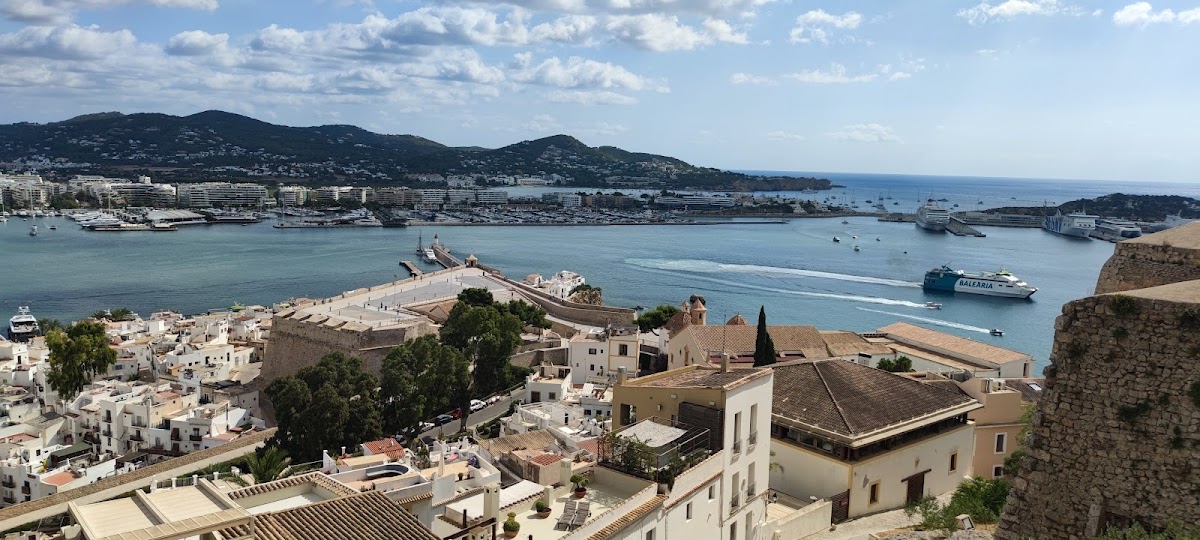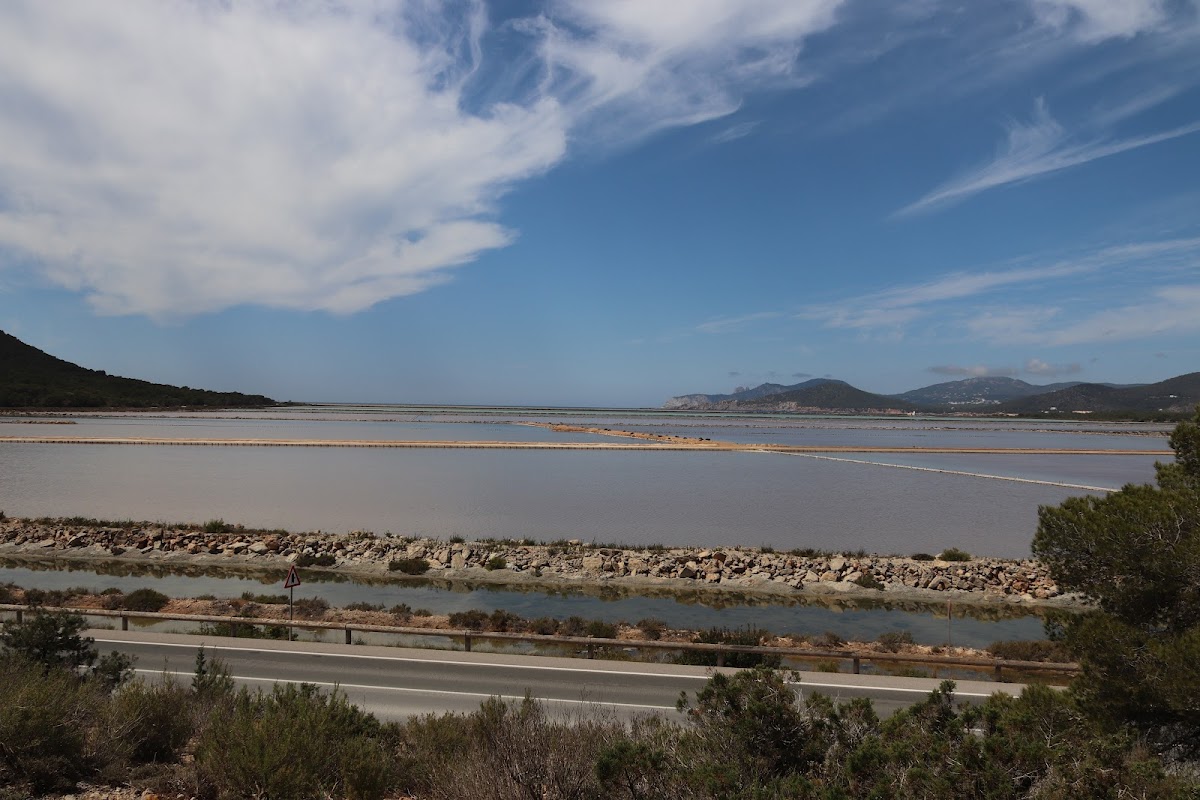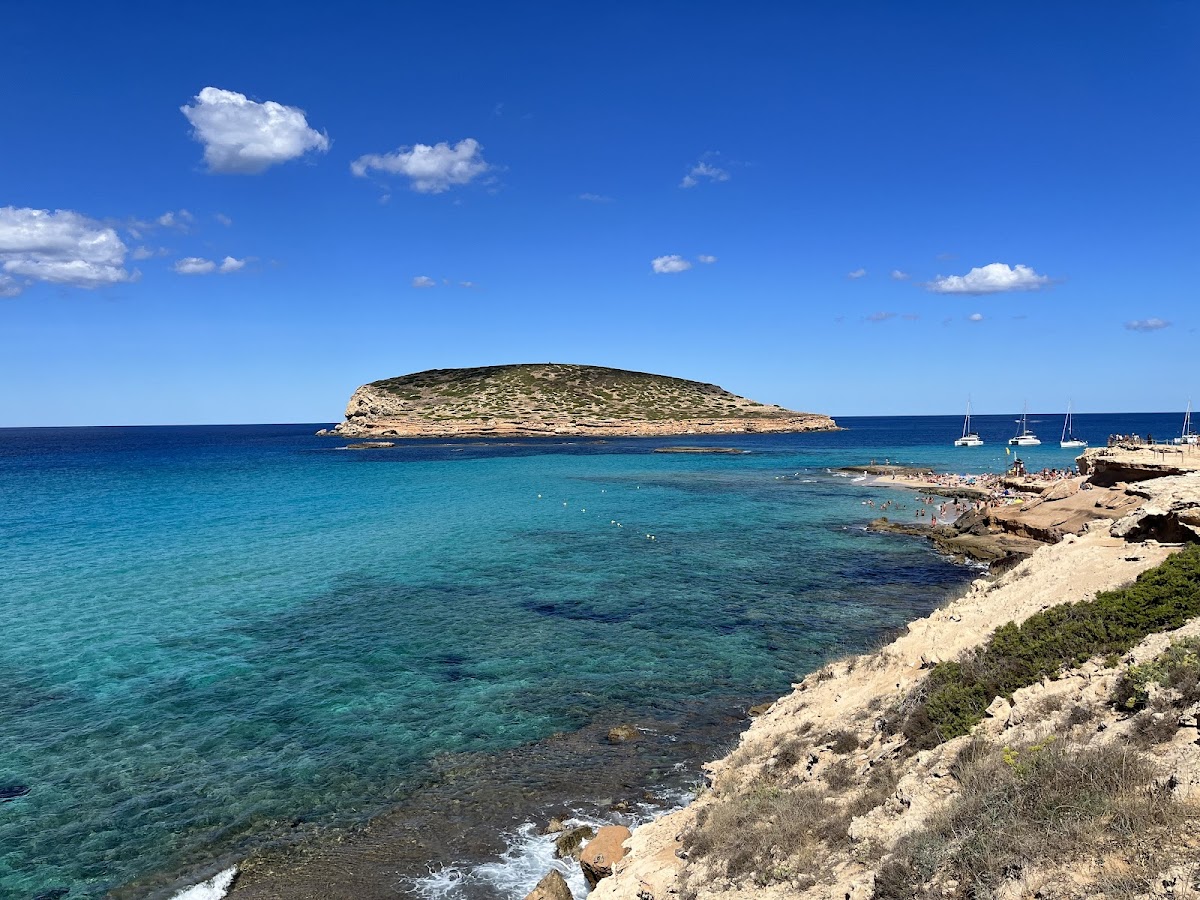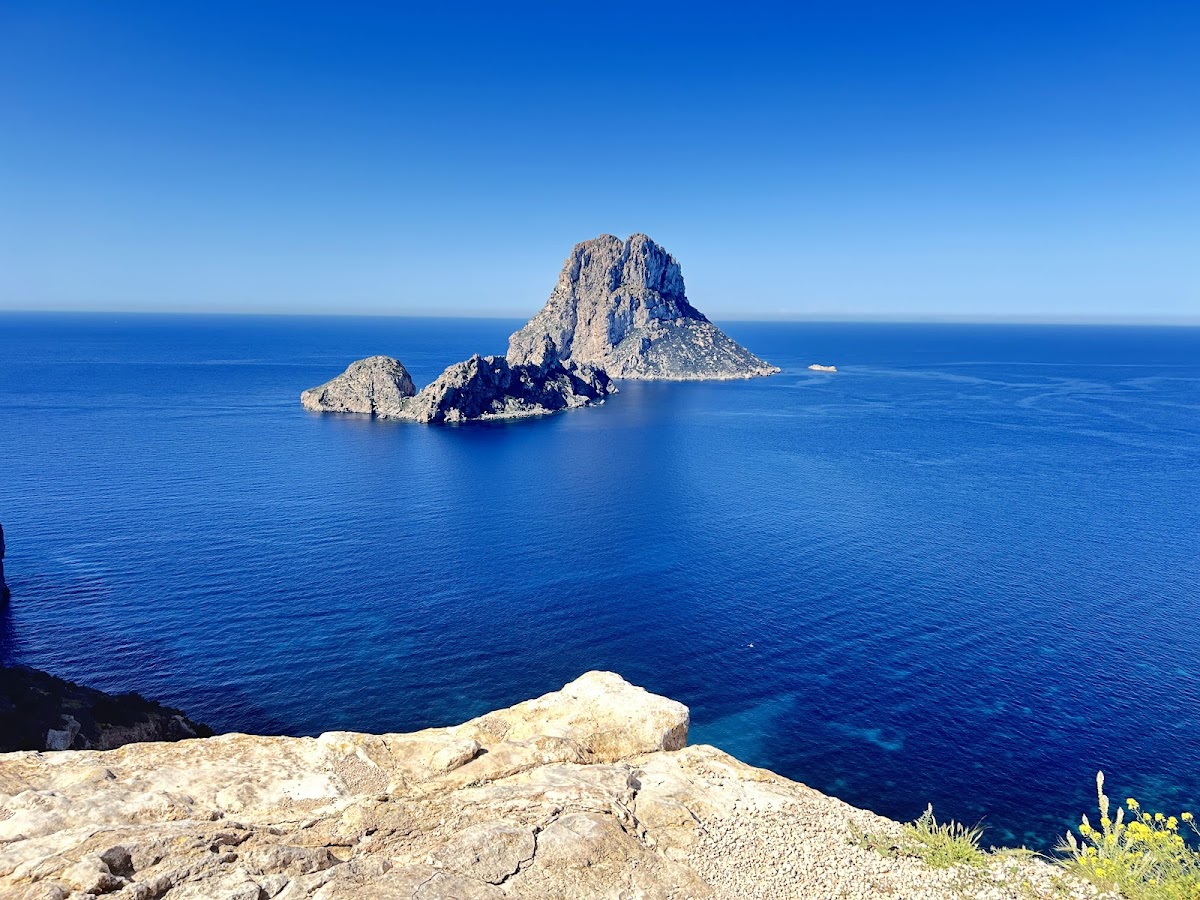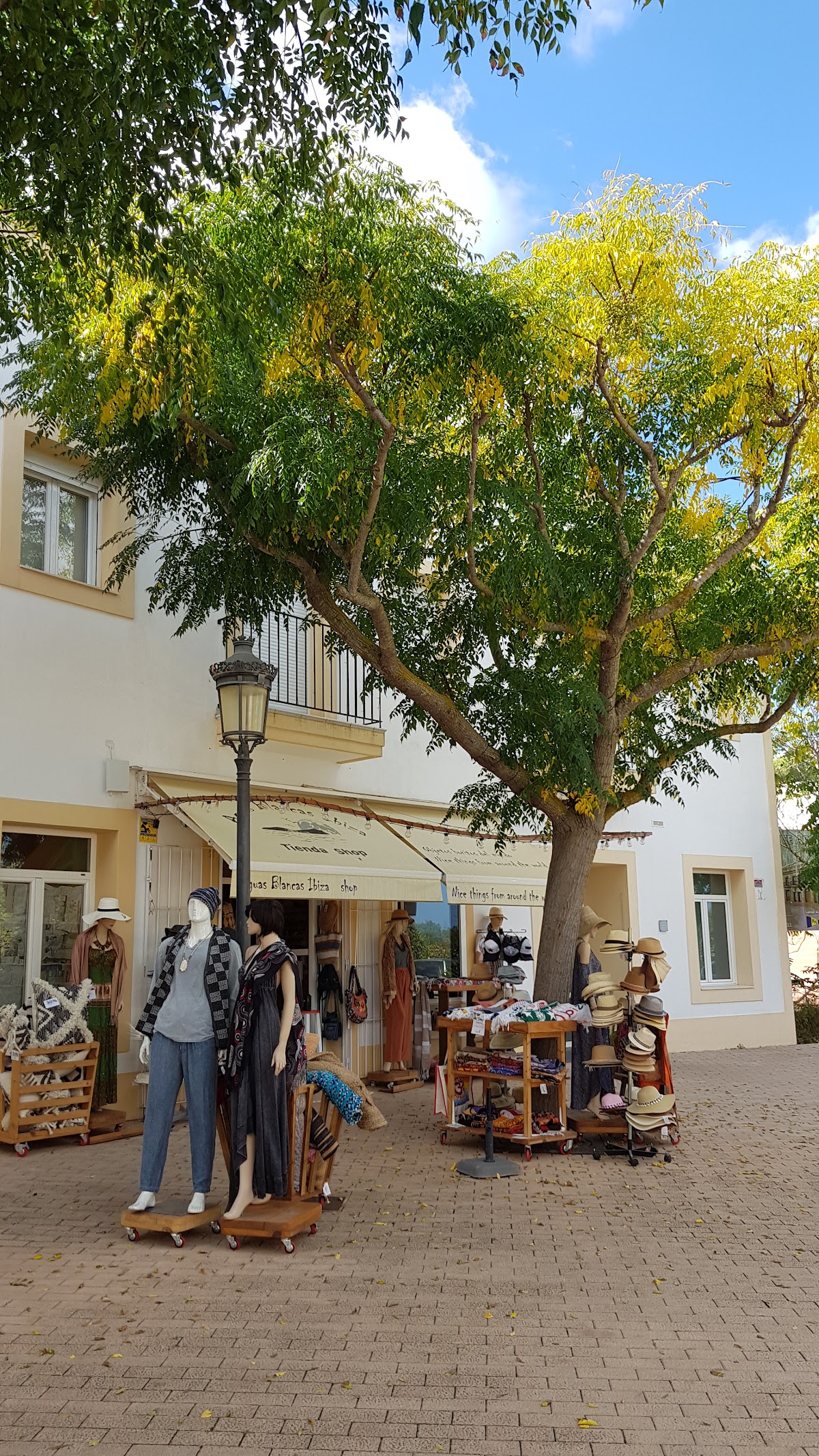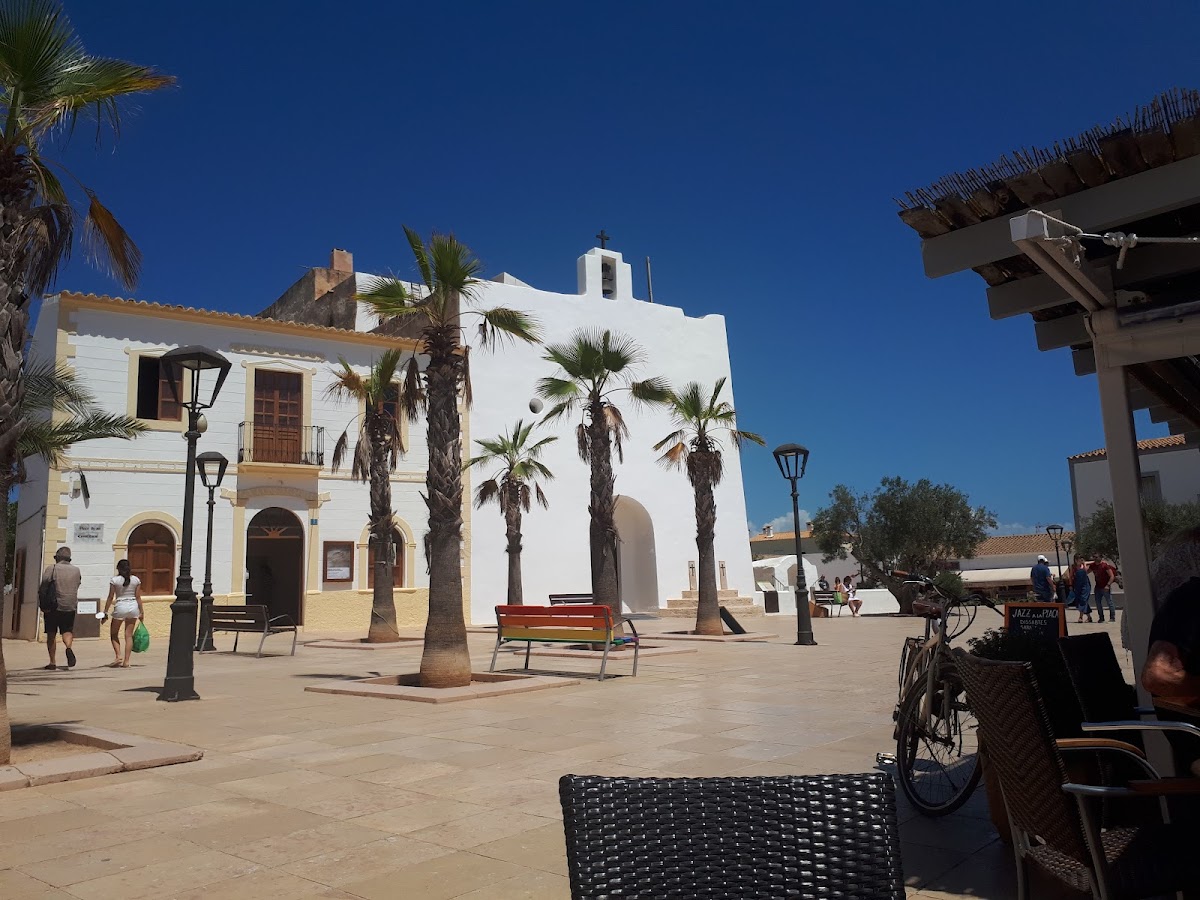White-Isle Beats, Boho Beaches & Sunset Magic – Ibiza
Ibiza, one of the enchanting Balearic Islands in the Mediterranean, is not only renowned globally for its vibrant nightlife, beautiful beaches, and bohemian spirit, but it also makes for a fantastic and easily accessible trip from its larger neighbor, . Whether you opt for a short flight or a scenic ferry ride, exploring Ibiza from Mallorca offers a wonderful opportunity to discover another unique island gem.
Ancient Times: Crossroads of Civilizations (Prehistory - 5th Century AD)
The earliest traces of human presence on Ibiza date back to the Neolithic period (around 3000 BC), with archaeological finds suggesting it was a point of passage for sailors. The island's strategic location in the western Mediterranean, coupled with its valuable salt flats (Ses Salines), made it an irresistible prize for successive maritime powers.
The true genesis of Ibiza's urban and economic development began around 654 BC with the arrival of the Phoenicians. They founded the city of Ibosim (modern-day Ibiza Town), establishing a crucial trading post for commodities like salt, fish, wool, and dye. The Phoenicians left an indelible mark, with the Puig des Molins necropolis, a vast burial ground, serving as a testament to their presence and sophisticated culture.
Following the decline of Phoenicia, Ibiza came under the control of Carthage (a former Phoenician colony) around 200 BC. The island continued to thrive as a key naval base and commercial hub for the Carthaginian Empire, further solidifying its importance in Mediterranean trade networks.
The Romans conquered Ibiza (renaming it Ebusus) in the 2nd century BC. While initially negotiating a favorable treaty that allowed the island to retain some Punic traditions and coinage, it eventually became a Roman municipality. Under Roman rule, infrastructure like roads and ports were developed, and the island continued its role in the production of garum (fish sauce) and pottery.
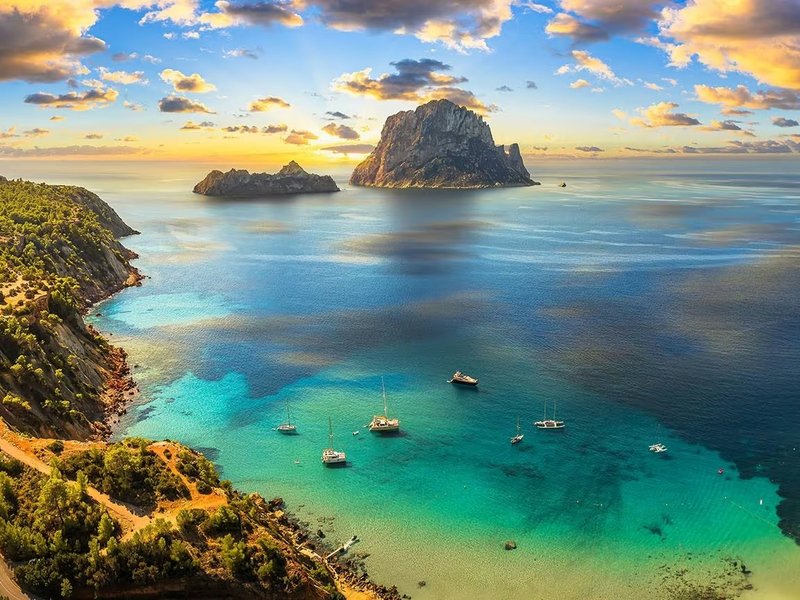
Deep Blue Mediterranean Sea surrounds Ibiza
Medieval Era: From Byzantine to Muslim to Christian Rule (5th - 18th Centuries)
After the fall of the Western Roman Empire, Ibiza experienced periods of rule by the Vandals and then the Byzantines.
A pivotal period began in 902 AD with the Muslim conquest. Renamed Yebisah, the island flourished under Islamic rule. It became an important agricultural and commercial center, deeply influenced by Arab culture, evident in architectural styles (like the layout of Dalt Vila), irrigation systems, and agricultural practices (introducing crops like oranges and olives). For a time in the 11th century, it was administered jointly with Dénia.
The Christian Reconquista arrived on August 8, 1235, when Catalan forces under Guillem de Montgrí conquered the island for the Crown of Aragon. The Muslim population was largely expelled or enslaved, and the island was repopulated with Christians from Catalonia. This marked a significant cultural and religious shift, with mosques being replaced by churches and Catalan becoming the dominant language.
During the early modern period (16th-18th centuries), Ibiza, like the other Balearics, suffered from continuous Ottoman and Barbary pirate attacks. This led to the extensive fortification of Dalt Vila (Ibiza Town's impressive walled old town, now a UNESCO World Heritage site) and the construction of numerous watchtowers along the coast, which remain prominent features of the island's landscape. The economy primarily relied on salt, agriculture, and fishing, with periods of hardship and limited development.
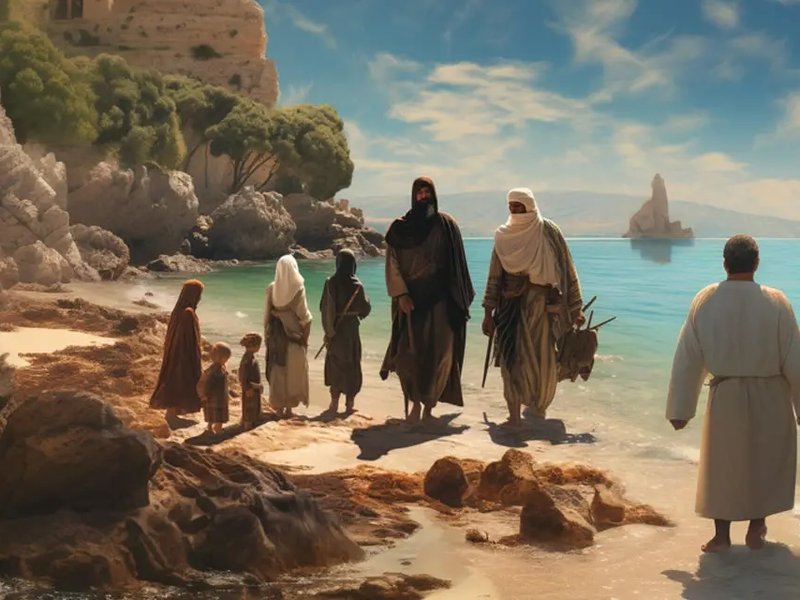
The 20th Century and the Rise of Tourism
The 19th and early 20th centuries saw gradual demographic growth and some agricultural development, but Ibiza remained a relatively isolated and economically modest island. However, the mid-20th century, particularly from the 1950s onwards, witnessed a radical transformation with the advent of mass tourism.
Ibiza's unique combination of natural beauty, a laid-back atmosphere, and a sense of freedom attracted a diverse array of visitors. In the 1960s and 70s, it became a haven for hippies and bohemians, drawn to its untouched coves, spiritual vibe, and tolerant ethos. This counter-cultural influx further solidified Ibiza's reputation as a unique destination.
The 1980s and 90s saw the rise of the electronic music scene, transforming Ibiza into a global capital for clubbing and nightlife. World-renowned DJs and superclubs cemented its status as a premier party destination, attracting millions of visitors seeking vibrant entertainment.
Contemporary Ibiza: Balancing Heritage and Hedonism
Today, Ibiza continues to navigate the complexities of its global popularity. While tourism remains the dominant economic driver (accounting for a significant portion of its GDP), there's a growing awareness and effort to diversify its appeal and address the challenges of overtourism:
- Diverse Tourism Offerings: Beyond the famous clubs, Ibiza promotes its quieter, more traditional side, with agrotourism, wellness retreats, exquisite gastronomy, and a focus on its natural beauty and UNESCO-listed heritage.
- Cultural Preservation: Efforts are being made to preserve Ibizan traditions, language (Eivissenc, a dialect of Catalan), traditional dances (like ball pagès), and unique architecture. Dalt Vila stands as a living museum, showcasing its layered history.
- Environmental Concerns: The island faces challenges related to water scarcity, waste management, and the impact of tourism on its delicate ecosystems, including the protected Posidonia seagrass meadows. Sustainable tourism initiatives are increasingly important.
- A "Two-Speed" Island: Ibiza often presents itself as a "two-speed" island – the vibrant, energetic summer season contrasting with a more tranquil, authentic experience during the off-season.
Ibiza's history is a captivating narrative of survival, adaptation, and reinvention. From ancient trading post to a counter-cultural haven and a global party mecca, the island has consistently redefined itself while retaining an undeniable allure that continues to draw people from all corners of the world.
Dalt Vila
Located in the heart of Ibiza Town, Dalt Vila is a UNESCO World Heritage Site that offers a glimpse into the island’s storied past.
- Location and How to Get There: Situated on a hill in Ibiza Town, Dalt Vila is accessible by foot, taxi, or local buses.
- What Makes It Special: Its ancient walls, cobbled streets, and sweeping views of the Mediterranean Sea make it a must-visit.
- Best Times to Visit: Early morning or late afternoon to avoid the crowds and enjoy cooler temperatures.
- Insider Tips: Wear comfortable shoes for exploring and take a break at one of the quaint cafes for a refreshing drink.
Ses Salines Natural Park
This breathtaking natural park is a sanctuary of biodiversity and stunning landscapes.
- Location and How to Get There: Located between southern Ibiza and northern Formentera, it can be accessed by car or guided tours.
- What Makes It Special: Home to salt flats, beautiful beaches, and diverse wildlife.
- Best Times to Visit: Spring or fall for the best weather and fewer tourists.
- Insider Tips: Bring binoculars for bird watching and a camera to capture the picturesque scenery.
Cala Comte
Famed for its crystal-clear waters and dramatic sunsets, Cala Comte is one of Ibiza's most beautiful beaches.
- Location and How to Get There: On the west coast of Ibiza, accessible by car or bus.
- What Makes It Special: Its turquoise waters and stunning views of nearby islets.
- Best Times to Visit: Late afternoon to enjoy the sunset.
- Insider Tips: Arrive early to secure a good spot on the beach and bring snorkeling gear to explore underwater.
Es Vedrà
This mystical island rock off the coast of Ibiza is steeped in legend and natural beauty.
- Location and How to Get There: Visible from the western coast of Ibiza; best viewed from Cala d’Hort.
- What Makes It Special: Its mysterious aura and the myths surrounding it.
- Best Times to Visit: Sunset for the most magical views.
- Insider Tips: Bring a picnic and enjoy the view from the beach or nearby cliffs.
Pacha Ibiza
Experience the heartbeat of Ibiza’s nightlife at one of its most famous clubs.
- Location and How to Get There: Located in Ibiza Town, easily accessible by taxi.
- What Makes It Special: Legendary DJs and an electric atmosphere.
- Best Times to Visit: Late night to early morning.
- Insider Tips: Book tickets in advance and arrive early to avoid long lines.
Santa Gertrudis
This charming village offers a different side of Ibiza with its artistic flair and local cuisine.
- Location and How to Get There: Centrally located, accessible by car or bus.
- What Makes It Special: Its bohemian vibe and art galleries.
- Best Times to Visit: Anytime, as it offers a relaxing escape from the hustle and bustle.
- Insider Tips: Try the local tapas and visit the artisan shops for unique souvenirs.
Formentera
A short ferry ride from Ibiza, Formentera is known for its pristine beaches and laid-back vibe.
- Location and How to Get There: Accessible by ferry from Ibiza Town.
- What Makes It Special: White sandy beaches and crystal-clear waters.
- Best Times to Visit: Summer months for the full beach experience.
- Insider Tips: Rent a bicycle or scooter to explore the island at your own pace.
Visiting Ibiza in Mallorca, Spain, promises a journey filled with enchanting sights, rich history, and vibrant culture. Whether you're drawn to its natural wonders or its lively nightlife, Ibiza offers something for every traveler. Remember to pack your sunscreen and sense of adventure, and you're sure to have an unforgettable experience.
Mentioned in This Guide
Explore all the locations mentioned in this guide on the map below.
Parc Natural de ses Salines
07818 Sant Josep de sa Talaia, Balearic Islands, Spain
Es Vedrà
Es Vedrà, Balearic Islands, Spain
Pacha
Av. 8 d'Agost, 07800 Eivissa, Illes Balears, Spain
Santa Gertrudis de Fruitera
07814 Santa Gertrudis de Fruitera, Balearic Islands, Spain
Formentera
Formentera, Balearic Islands, Spain
Dalt Vila
Dalt Vila, 07800 Ibiza, Illes Balears, Spain
Cala Comte
Cala Comte, 07829, Balearic Islands, Spain
